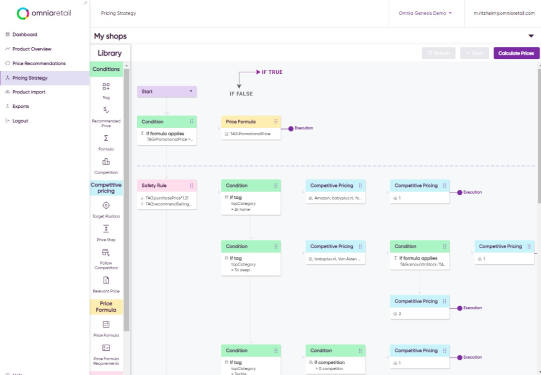Direct Scraping vs. CSE Data
Table of contents:
Direct Scraping vs. CSE Data: Competitive Intelligence Methods
When gathering competitive pricing intelligence, ecommerce businesses have two primary data collection methods: direct scraping and comparison shopping engine (CSE) data. Understanding the differences helps you choose the right approach for your pricing strategy.
Direct Scraping
Direct scraping involves collecting data directly from your competitors' websites in real-time. This method provides detailed insights into specific competitors' pricing strategies and product availability.
- Automated tools visit competitor websites regularly
- Data is extracted directly from product pages
- Provides real-time pricing updates
- Captures complete product assortments
- Full competitor coverage: Access to complete product catalogs of chosen competitors
- Always accurate prices: Real-time data directly from the source
- Comprehensive product data: Includes availability, descriptions, and promotional information
- Competitor-specific insights: Deep understanding of individual competitor strategies
- Limited market scope: Only covers the specific competitors you choose to monitor
- Resource intensive: Requires technical infrastructure and maintenance
- Narrow market view: May miss broader market trends and new entrants
Comparison Shopping Engine (CSE) Data
CSE data is collected from comparison shopping platforms like Google Shopping, where retailers advertise their products. This method provides a broader market perspective.
How it works
- Data is gathered from shopping comparison platforms
- Captures prices from multiple retailers simultaneously
- Reflects advertised prices rather than full catalogs
- Provides market-wide pricing trends
Advantages:
- Comprehensive market snapshot: View of overall market dynamics and trends
- New competitor identification: Helps discover emerging market players
- Broad price range analysis: Shows pricing distribution across the market
- Market trend insights: Understanding of general market movements
Limitations:
- Incomplete assortment view: Only shows products retailers choose to advertise
- Advertising-dependent: Missing products not promoted on CSEs
- Less granular insights: Limited depth on individual competitor strategies
The combined approach
Rather than choosing one method over the other, the most effective competitive intelligence strategy combines both approaches:
Benefits of integration:- Enhanced market coverage: Direct scraping for key competitors + CSE data for market overview
- Improved accuracy: Cross-validation of pricing information
- Strategic depth: Detailed competitor analysis plus broad market trends
- Competitive advantage: More comprehensive data foundation for pricing decisions
Choosing the Right Method
Use direct scraping when:
- You need detailed insights on specific key competitors
- Complete product assortment visibility is crucial
- Real-time pricing accuracy is essential
- You have clearly defined competitive set
Use CSE data when:
- You want to understand overall market trends
- Discovering new competitors is important
- You need broad market price benchmarking
- Budget constraints limit direct scraping scope
Use both when:
- You want comprehensive competitive intelligence
- Strategic pricing decisions require both depth and breadth
- You can invest in robust data infrastructure
- Market leadership requires complete market understanding
Implementation Considerations
Regardless of the method chosen, data quality is paramount. Consider managed scraping services that handle technical maintenance, ensure data accuracy, and provide reliable infrastructure for your competitive intelligence needs.Talk to one of our pricing
experts today.
